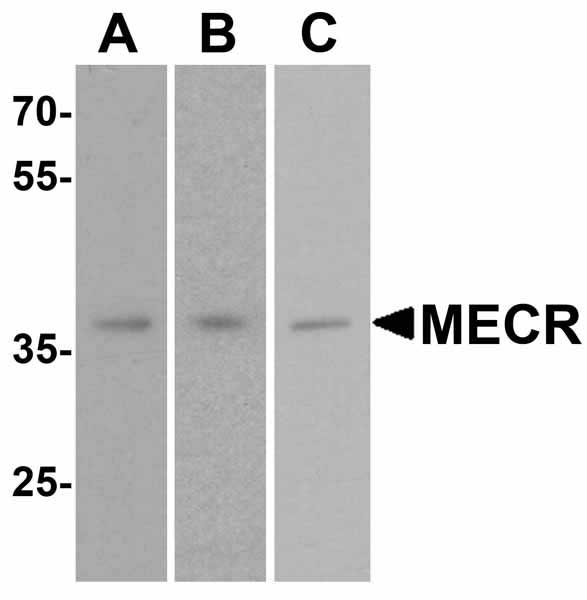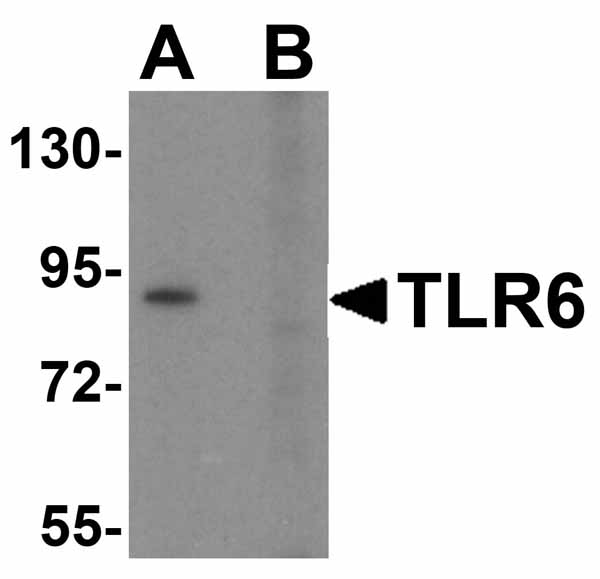MSI2 Antibody
- SPECIFICATION
- CITATIONS
- PROTOCOLS
- BACKGROUND

Application
| WB, IHC-P, IF, ICC, E |
|---|---|
| Primary Accession | Q96DH6 |
| Other Accession | EAW94506, 124540 |
| Reactivity | Human, Mouse, Rat |
| Host | Rabbit |
| Clonality | Polyclonal |
| Isotype | IgG |
| Calculated MW | 35197 Da |
| Application Notes | MSI2 antibody can be used for detection of MSI2 by Western blot at 1 μg/mL. Antibody can also be used for immunohistochemistry starting at 5 μg/mL and immunocytochemistry starting at 5 μg/mL. For immunofluorescence start at 5 μg/mL. |
| Gene ID | 124540 |
|---|---|
| Target/Specificity | MSI2 antibody was raised against a 15 amino acid synthetic peptide near the amino terminus of human MSI2. The immunogen is located within amino acids 30 - 80 of MSI2. |
| Reconstitution & Storage | MSI2 antibody can be stored at 4 ℃, stable for one year. As with all antibodies care should be taken to avoid repeated freeze thaw cycles. Antibodies should not be exposed to prolonged high temperatures. |
| Precautions | MSI2 Antibody is for research use only and not for use in diagnostic or therapeutic procedures. |
| Name | MSI2 |
|---|---|
| Function | RNA binding protein that regulates the expression of target mRNAs at the translation level. May play a role in the proliferation and maintenance of stem cells in the central nervous system (By similarity). |
| Cellular Location | Cytoplasm. Note=Associated with polysomes. |
| Tissue Location | Ubiquitous; detected at low levels. |

Thousands of laboratories across the world have published research that depended on the performance of antibodies from Abcepta to advance their research. Check out links to articles that cite our products in major peer-reviewed journals, organized by research category.
info@abcepta.com, and receive a free "I Love Antibodies" mug.
Provided below are standard protocols that you may find useful for product applications.
Background
MSI2 Antibody: Musashi2 (MSI2) is an RNA-binding protein that is highly expressed in precursor cells in the ventricular and subventricular zones of the developing mammalian CNS. Like the related MSI1, MSI2 has been suggested to be involved stem cell production and maintenance. MSI2 is the predominant MSI protein in hematopoietic stem cells, and its knockdown leads to reduced engraftment and depletion in vivo. Expression levels of MSI2 are elevated in myeloid leukemia cells lines, and MSI2 appears to cooperate with BCR-ABL1 to induce an aggressive leukemia; the level of MSI2 directly correlates with decreased survival in patients. MSI2 negatively regulates the asymmetric cell fate determinant NUMB, suggesting that this signaling pathway may provide future targets for future therapies.
References
Sakakibara S, Nakamura Y, Stoh H, et al. RNA-binding protein Musashi2: developmentally regulated expression in neuronal precursor cells and subpopulations of neurons in mammalian CNS. J. Neurosci. 2001; 21:8091-107
Kharas MG, Lengner CJ, Al-Shahrour F, et al. Musashi-2 regulates normal hematopoiesis and promotes aggressive myeloid leukemia. Nat. Med. 2010; 16:903-8
Ito T, Kwon HY, Zimdahl B, et al. Regulation of myeloid leukaemia by the cell-fate determinant Musashi. Nature 2010; 466:765-8.
Griner LN and Reuther GW. Aggressive myeloid leukemia formation is directed by the Musashi2/Numb pathway. Cancer Biol. Ther. 2010; 10:979-82
If you have used an Abcepta product and would like to share how it has performed, please click on the "Submit Review" button and provide the requested information. Our staff will examine and post your review and contact you if needed.
If you have any additional inquiries please email technical services at tech@abcepta.com.













 Foundational characteristics of cancer include proliferation, angiogenesis, migration, evasion of apoptosis, and cellular immortality. Find key markers for these cellular processes and antibodies to detect them.
Foundational characteristics of cancer include proliferation, angiogenesis, migration, evasion of apoptosis, and cellular immortality. Find key markers for these cellular processes and antibodies to detect them. The SUMOplot™ Analysis Program predicts and scores sumoylation sites in your protein. SUMOylation is a post-translational modification involved in various cellular processes, such as nuclear-cytosolic transport, transcriptional regulation, apoptosis, protein stability, response to stress, and progression through the cell cycle.
The SUMOplot™ Analysis Program predicts and scores sumoylation sites in your protein. SUMOylation is a post-translational modification involved in various cellular processes, such as nuclear-cytosolic transport, transcriptional regulation, apoptosis, protein stability, response to stress, and progression through the cell cycle. The Autophagy Receptor Motif Plotter predicts and scores autophagy receptor binding sites in your protein. Identifying proteins connected to this pathway is critical to understanding the role of autophagy in physiological as well as pathological processes such as development, differentiation, neurodegenerative diseases, stress, infection, and cancer.
The Autophagy Receptor Motif Plotter predicts and scores autophagy receptor binding sites in your protein. Identifying proteins connected to this pathway is critical to understanding the role of autophagy in physiological as well as pathological processes such as development, differentiation, neurodegenerative diseases, stress, infection, and cancer.



